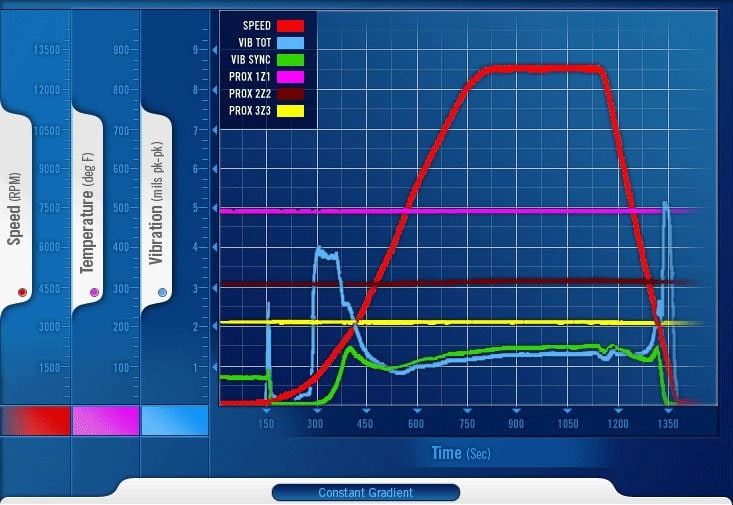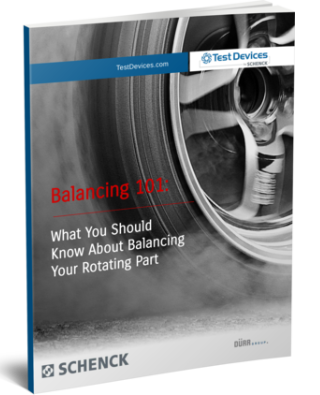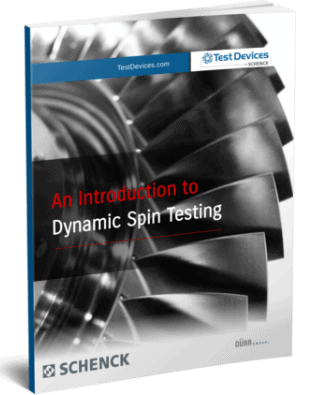Thermal Gradient
The Issue
The air and gas flowing through a turbine engine experiences continuous temperature changes in response to the work done during compression, the energy added during combustion and the expansion of combustion gases through the turbine stages. These air and gas temperatures influence the metal temperatures of each disk rim.
At the center of the disks (or bores) the temperatures are lower, either from natural or active cooling, which creates a radial temperature gradient across the disk radius.
Download Our Spin Testing Ebook
Why It Matters
At the mid-stages of the high compressor, rim temperatures become high enough relative to the bores to create significant radial thermal gradients. These gradients induce thermal hoop stresses that become a significant percentage of the overall disk stress.
The largest radial thermal gradients are created in the high pressure turbine – the stages being directly impinged by the hot gas coming out of the combustor. The rim and bore temperature differences can be many hundreds of degrees over a span of only a few inches. The local differences in the amount of thermal expansion due to this gradient can significantly alter the three-dimensional stress state in the disk, especially given the complex cross sectional geometries of most disk designs. This altered stress state can result in disk behavior and durability that is different from that when the disk is tested at uniform temperature. Essentially, the application of a thermal gradient is an important aspect in replicating actual engine operating conditions.
What You Can Do
By conducting spin tests with a temperature state that simulates actual operating conditions, test data is more valid and useful than for spin tests conducted at ambient temperature or even isothermal elevated temperatures.
For this reason, spin testing of any hot section disk should include testing with the proper radial thermal profile applied.
Download Our Spin Testing Ebook
How Test Devices Can Help
Test Devices has experience and expertise applying both radial and axial temperature gradients through multi zoned ovens with heating and cooling capability at each zone. In addition, other data, such as radial growth and strain measurements, can be taken to validate structural models under both rotational and thermal gradient conditions. This combination of test features offers the best replication of the operational gas turbine environment, making Test Devices Thermal Gradient Testing an ideal component of a turbine engine development program.
NEW: Thermal Mechanical Fatigue Testing
Test Devices has run a successful demonstration test of Thermal Mechanical Fatigue (TMF) testing, which synchronizes the temperature gradient with engine speed in real time. Compared to constant gradient testing, TMF creates a more realistic test environment by simulating operating conditions of an engine that is starting up, shutting down or changing speed.








